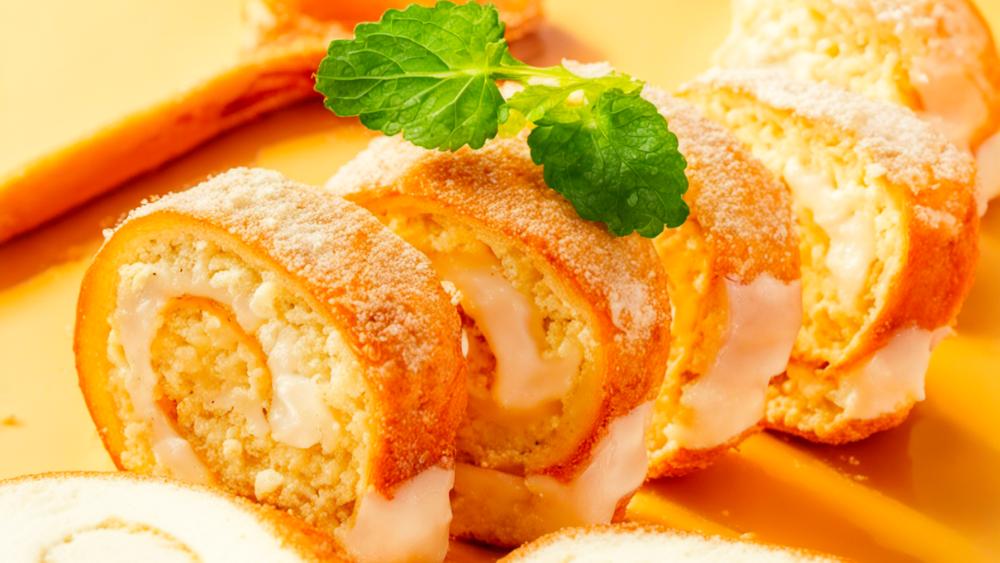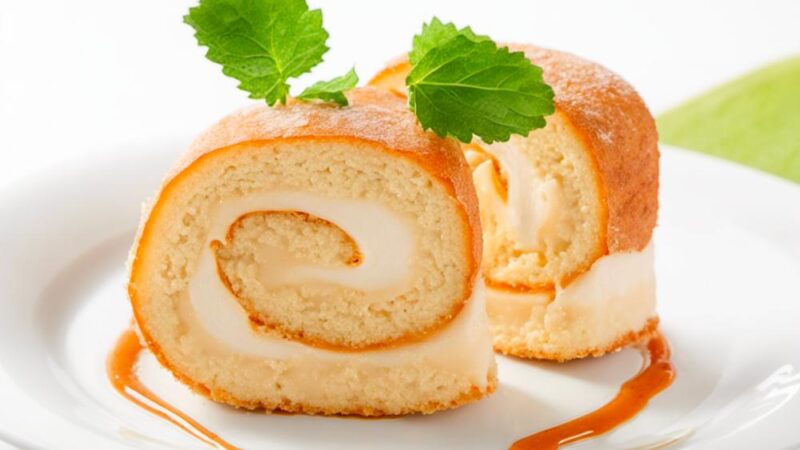
With a name of strange origin and several nicknames spread around the world, this dessert will be visually familiar to you. The gypsy arm is like a coiled pionono but in its composition it is not. That is, yes but no; and since what we just said was not understood at all, keep reading as we do not skimp on information and data about this incredible dessert.
On the gypsy arm, family delight
“Gypsy arm” is a delicious dessert that has its roots in Spanish cuisine and has become popular in many parts of the world. It is also known simply as “gypsy arm” or “cream gypsy arm.”
This dessert is characterized by its shape of a roll or rolled arm, which is filled with different sweet ingredients, such as pastry cream, chocolate, fruits or jam. It is a versatile option that allows a wide variety of flavors and presentations.
It is a dessert that is enjoyed at many celebrations and special occasions due to its elegant presentation and delicious flavor. Each family can have its own recipe and variations specials that make this dessert unique and meaningful. that’s why it’s called grandma’s gypsy arm.
Gypsy arm filling
The pastry cream filling is one of the most traditional and popular for gypsy arm. The pastry cream is a mixture of milk, sugar, egg yolks and flour, cooked until thickened and cooled. This cream is spread on a sponge cake sheet, which is then rolled to create the characteristic gypsy arm shape.
In addition to the pastry cream, it is common to find versions filled with chocolate truffles, fresh fruits such as strawberries or raspberries, or even jams of various flavors. The choice of filling can vary depending on the personal tastes and creativity of the cook.
To make a homemade gypsy arm, a basic recipe is usually followed that includes the preparation of a soft and spongy sponge cake that will serve as the base for the final roll. The key to a good gypsy arm is to achieve a sponge cake that is flexible enough to roll without breaking.
Why gypsy arm?
The name “gypsy arm” for this dessert has historical origins and it has been maintained over time in the gastronomic culture of some countries, especially in Spain. However, the exact reason why it is called that is not completely clear and has given rise to several theories and speculations.
One theory suggests that the name comes from the shape of the dessert, which resembles a rolled or bent arm similar to the sleeve of a gypsy who might wear a long, decorative outfit.
The relationship between the name and the gypsy community is uncertain and has given rise to various theories. Despite its imprecise origin, it became an iconic dessert in Spanish confectionery and has spread over the years to other parts of the world, adopting regional variations in ingredients and flavors.
Its characteristic gypsy arm shape
The coiled shape of the gypsy arm is characteristic and distinctive, which might have inspired the association with the image of a bent arm. Another theory is that the name is derived from the tradition of fairs and festivals where gypsies used to sell and prepare this type of sweets.
In some regions, gypsies were known for their culinary skills and for making rolled desserts such as gypsy arm. This historical association may have contributed to the dessert’s name.
Pionono and gypsy arm, not as similar as it seems
Pionono and gypsy arm are two rolled desserts that share similarities in their presentation but differ in several key aspects.
The main difference lies in the base of the dessert: The pionono is made with a dough more similar to a sponge cake or a sponge cake slab, while the gypsy arm uses a softer and fluffier sponge cake slab. This results in different textures and flavors.
Another significant difference is their geographical origin. Pionono is originally from Spain, specifically from the town of Santa Fe, in the province of Granada, and has become a typical dessert of the region. On the other hand, gypsy arm is a dessert found in various cultures and countries and its name may vary depending on the region.
The gypsy arm and its many names
The term arm of gypsy is still widely used to describe this rolled dessert in many Spanish-speaking regions. However, in some places and contexts, it has been decided to use more neutral and contemporary terms to refer to this delicious dessert.
Some people prefer to call the gypsy arm using names like “cake roll,” “cream roll,” or simply “rolled dessert.” to describe this type of preparation. These names are more descriptive and culturally neutral, and avoid negative connotations or stereotypes associated with the word “gypsy.”
When was the gypsy arm invented?
The idea of rolling a sponge cake with filling dates back to the 18th century in Europe. In France, it is known as “roulade,” and in Switzerland as “roulade suisse.” These desserts were usually filled with jam or chantilly cream.
As recipes and culinary techniques spread throughout Europe, it is possible that this concept reached Spain in the 19th century or early 20th century where it was given the name “gypsy arm.”
Follow me on Instagram (here)
And on YouTube I upload new videos every week (click here)
Gypsy arm recipe
Yield: 8 servings
Preparation time: 1 hour 30 minutes
Ingredients
For the cake:
- 4 eggs
- 125 gr of sugar
- 125 g of flour
- 1 Teaspoon vanilla extract
- a pinch of salt
For the filling (pastry cream):
- 500 ml of milk
- 4 egg yolks
- 100 g of sugar
- 40 g of cornstarch
- 1 Teaspoon vanilla extract
How to do gypsy arm in 6 easy steps
- In a bowl, beat the eggs and sugar for about 5 minutes until the mixture is thick and clearer. Add the vanilla essence and mix well.
- Sift the flour over the mixture and fold in gently with a spatula to maintain the sponginess of the cake. Pour into a rectangular tray lined with parchment paper, spreading evenly.
- Bake in a preheated oven at 180° for 10-12 minutes, or until the cake is golden and a toothpick inserted in the center comes out clean.
- In a saucepan, heat the milk over medium heat without boiling. In a bowl, beat the egg yolks, sugar, cornstarch and vanilla essence.
- Pour the hot milk over the yolk mixture, whisking constantly. Return to the saucepan and cook over low heat, stirring until the cream thickens. Remove and let cool.
- Unroll the cooled cake and spread a layer of pastry cream evenly on it. Roll the cake again with the cream inside. Refrigerate one hour before serving.

Source: www.paulinacocina.net


